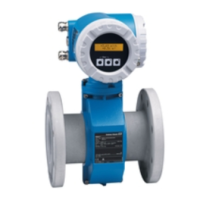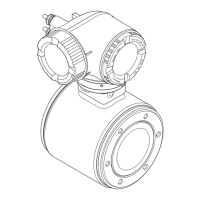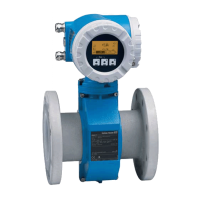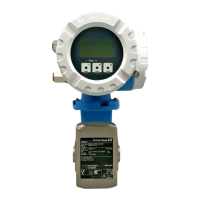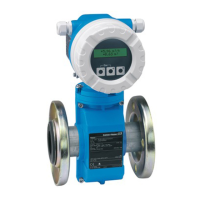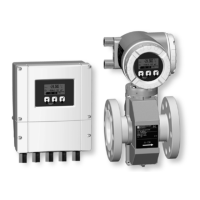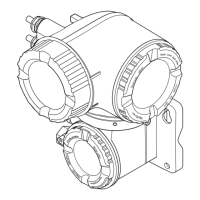4.5 Potential equalisation
The sensor and the fluid must have
roughly the same electrical potential to
ensure that measurement is accurate
and no galvanic corrosion takes place at
the electrode. Normally the reference
electrode in the sensor or the metal pipe
ensures that the potentials are equalised.
Reference electrodes:
• Promag A:
always with reference electrode
• Promag F:
optional, depending on material
• Promag H:
no reference electrode, as there is
always a metallic connection to the
fluid.
If the reference electrode is correctly grounded and the fluid flows through metallic,
non-lined and grounded piping, then it is sufficient to connect the grounding terminal
of the Promag 33 transmitter housing to the potential equalisation line in order to pre-
vent corrosion. The connection with the remote-mounted version is made at the
ground terminal of the connection housing.
Caution!
Danger of permanent damage to the instrument! If the fluid cannot be grounded for
operational reasons, ground disks are to be used.
Potential equalisation for some special cases is described below:
Potential equalisation for lined pipes
with cathodic protection
When the fluid cannot be grounded for
operational reasons, the measuring unit
must be installed that it is potential-free
(Fig. 27). Ensure that components of the
piping are connected to one another
(copper wire, 6 mm
2
).
All national regulations regarding
potential free installation are to be
observed (e.g. VDE 0100).
Ensure that the mounting material used
does not result in a conductive bond with
the measuring unit and that the material
can withstand the tightening torque
used.
Caution!
ba009y25
1 Empty pipe detection electrode
2 Measuring electrodes
3 Reference electrode(s)
1
2
2
3
Fig. 26
Position of different electrodes
in the measuring tube
(Example: Promag 33 F)
6 mm² Cu
Isolating transformer
Power supply
ba009y26
Fig. 27
Potential equalisation for lined
pipes with cathodic protection
4 Electrical Connection Promag 33
28 Endress+Hauser
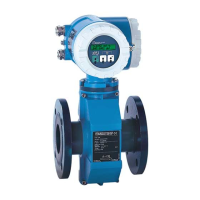
